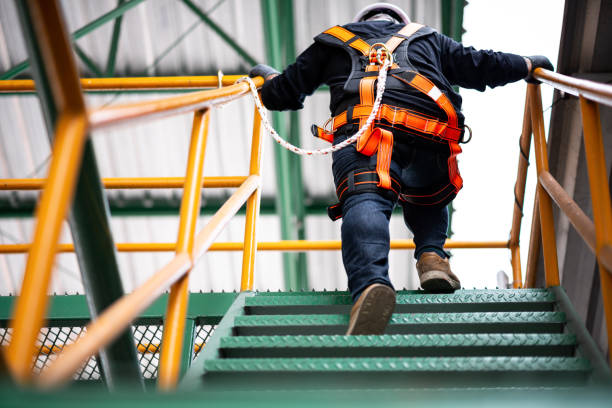Steps for Responsible Hazardous Material Handling
Handling hazardous materials requires careful attention to safety protocols and regulatory guidelines to protect human health and the environment. Substances like asbestos, once widely used in construction, pose significant risks if disturbed, releasing microscopic fibers into the air. Understanding the correct procedures for identifying, managing, and removing such materials is crucial for anyone involved in building maintenance, renovation, or demolition projects. This article outlines essential steps for responsible handling, emphasizing the importance of professional expertise and adherence to safety standards.

Hazardous materials, including asbestos, present distinct challenges due to their potential to cause harm upon exposure. Asbestos, a naturally occurring mineral fiber, was valued for its heat resistance, tensile strength, and insulating properties, leading to its widespread use in various building materials until its health risks became fully understood. When materials containing asbestos are disturbed, they can release microscopic fibers that, if inhaled, can lead to serious respiratory diseases. Proper identification and management are the first critical steps in mitigating these risks.
Understanding Hazardous Materials and Asbestos Fibers
Identifying hazardous materials like asbestos fibers is the foundation of any safe handling process. Asbestos can be found in a variety of building components, including insulation, roofing, floor tiles, and pipe lagging, particularly in structures built before the late 20th century. Recognizing the potential presence of these materials requires a thorough understanding of building history and common asbestos-containing product applications. Visual identification alone is often insufficient, necessitating professional inspection and laboratory testing to confirm the material’s composition and assess the risk of contamination.
The Importance of Professional Inspection and Safety
Professional inspection is paramount when dealing with suspected hazardous materials. Certified inspectors can safely collect samples and have them analyzed to confirm the presence of asbestos or other dangerous substances. This initial step is vital for developing a comprehensive safety plan. When asbestos is confirmed, strict safety protocols must be implemented to prevent exposure. This includes establishing controlled work areas, using specialized personal protection equipment (PPE) such as respirators and disposable suits, and ensuring proper ventilation to minimize the spread of fibers.
Asbestos Abatement and Contamination Prevention
Asbestos abatement refers to the process of reducing or eliminating asbestos exposure. This typically involves removal, encapsulation, or enclosure of asbestos-containing materials. Removal is often the most complete solution, but it is also the most intricate and potentially hazardous. During abatement, measures to prevent contamination are critical. This involves sealing off the work area, using negative air pressure to contain fibers, and meticulously cleaning the site with HEPA-filtered vacuums and wet methods to capture any airborne particles. The goal is to ensure that no hazardous material escapes the controlled environment.
Safe Disposal and Regulatory Compliance
Once hazardous materials like asbestos are removed, their safe disposal is mandated by stringent regulations. Improper disposal can lead to environmental contamination and continued public health risks. Asbestos-containing waste must be double-bagged, sealed, and clearly labeled before being transported to approved hazardous waste landfills. Adherence to local, national, and international regulations is not just a legal requirement but a fundamental aspect of responsible material handling, ensuring that the risk of exposure is eliminated post-cleanup.
Protecting Health During Building Renovation and Demolition
Building renovation and demolition projects carry an inherent risk of disturbing hidden hazardous materials. Prior to commencing any work, a comprehensive inspection for asbestos and other dangerous substances is essential. Implementing robust protection measures, including worker training, site-specific safety plans, and continuous air monitoring, helps safeguard the health of workers and the public. Understanding the potential for exposure and taking proactive steps to mitigate risk is a cornerstone of safe industrial and residential development.
Professional asbestos cleanup and removal services involve various cost factors, including the type and amount of asbestos-containing material, its location, the complexity of the removal, and regional labor rates. Smaller, easily accessible areas might incur lower costs compared to extensive, hard-to-reach installations. These costs can fluctuate significantly based on project scope and geographical location.
| Service Type | Provider Type | Cost Estimation (USD) |
|---|---|---|
| Minor Removal (e.g., pipe insulation) | Licensed Asbestos Contractor | $500 - $2,000 |
| Medium Removal (e.g., floor tiles, small area) | Licensed Asbestos Contractor | $2,000 - $5,000 |
| Large-Scale Abatement (e.g., entire roof, extensive area) | Licensed Asbestos Contractor | $5,000 - $30,000+ |
| Asbestos Inspection and Testing | Certified Inspector | $200 - $800 |
Prices, rates, or cost estimates mentioned in this article are based on the latest available information but may change over time. Independent research is advised before making financial decisions.
Responsible hazardous material handling, particularly concerning asbestos, is a multi-faceted process demanding expertise, strict adherence to safety protocols, and regulatory compliance. From initial inspection and risk assessment to professional abatement, contamination prevention, and safe disposal, each step is critical in protecting public health and the environment. Engaging qualified professionals ensures that these challenging tasks are performed effectively, minimizing potential exposure and mitigating long-term risks associated with hazardous substances in our built environment.





